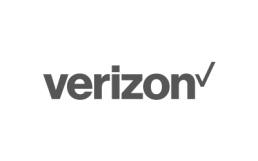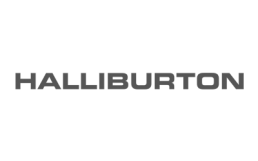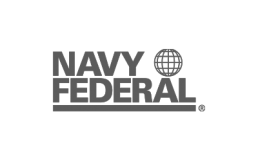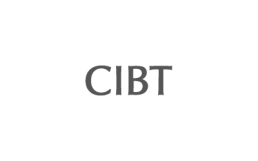The Future of Education - Integrated Data and Infrastructure
We work with universities to enhance the power of integrated systems in student experiences. We improve operational demands and adapt to new models of teaching. The university system in the United States is governed by individual states and offer various undergraduate and graduate programs. Universities emphasize research, liberal arts, and vocational training, catering to over 20 million in the US. Public universities are primarily state-funded, while private universities rely on tuition and donations. Accreditation ensures quality education and institutional accountability. The system is characterized by a strong emphasis on academic freedom and diversity, fostering an environment for critical thinking and innovation. Additionally, universities often engage in community service and partnerships, enhancing their role in local and global contexts.

Many educational institutions are burdened with legacy systems that fail to keep pace with evolving digital demands.
Challenges
A lack of integration between various platforms, including learning management systems (LMS) creates an incoherent learning environment.
Obsolete Technology
Many educational institutions are burdened with legacy systems that fail to keep pace with evolving digital demands. Outdated technology not only limits the efficiency of administrative operations but also stifles the introduction of innovative learning tools, leading to a suboptimal educational experience.
Inadequate System Integration
A lack of integration between various platforms, including learning management systems (LMS), student information systems (SIS), and administrative tools, creates fragmented operations. This fragmentation disrupts data flow and results in inconsistent user experiences, making it challenging for educators and students to navigate seamlessly across different systems.

Reduced Learner Involvement
The success of educational technology heavily depends on the active participation of its users. When students and educators are disengaged, either due to a lack of user-friendly design or insufficient training, the technology’s potential to enhance learning outcomes is significantly diminished.
Resource Constraints
Many educational institutions struggle with financial limitations, making it difficult to invest in new technologies or maintain current systems. As a result, important upgrades and technological advancements are often delayed, further compounding issues related to outdated systems and scalability.
Growth is often met with resistance in the form of hurdles from cultural to financial, and organizational barriers.
Organizational Barriers
Resistance to change, along with a lack of strategic alignment between IT goals and institutional strategies, can significantly slow progress and lead to ineffective implementation of new technologies. Additionally, fragmented processes within institutions create inconsistencies that impede the smooth adoption of these IT solutions.
Financial Barriers
Budget constraints and high implementation costs limit the ability to invest in necessary IT upgrades, making it difficult for institutions to enhance their technological capabilities. Additionally, ongoing maintenance expenses further increase financial pressure, hindering sustainable investments in IT infrastructure.
Technological Barriers
Legacy systems often struggle with compatibility issues when integrating newer technologies, leading to significant integration challenges. Furthermore, ensuring the security of sensitive data remains a critical concern, complicating the overall effectiveness of IT systems.
Operational Barriers
Operational inefficiencies disrupt the smooth functioning of IT systems, often exacerbated by inadequate training for staff and students, which hinders effective technology use. Additionally, the lack of sufficient technical support further complicates these operational challenges, limiting the overall effectiveness of technology implementation.
Cultural Barriers
Resistance to new technologies, driven by fear of change and reluctance to adopt new tools, slows down technological integration, while poor collaboration among stakeholders further impedes the successful implementation of IT solutions. Additionally, conflicting priorities among faculty, students, and IT teams contribute to a slower adoption process.
Desired Outcomes
Modernized IT infrastructure helps meet specific institutional needs with custom software and tailored applications, to ensure enhanced accessibility.
Immersive Digital Journeys
Deliver engaging and personalized learning by integrating interactive tools, AR/VR, gamification, and AI-driven adaptive learning with digital collaboration platforms, resulting in deeper student engagement and improved educational outcomes.
Efficient Resource Utilization
Maximize staff focus on strategic roles and improve resource management by automating routine tasks with RPA, integrating ERP and SIS systems, and utilizing cloud-based solutions and real-time analytics for instant data access and decision-making, leading to enhanced productivity and operational effectiveness.
Effective Learning Solutions
Support evolving digital needs and innovative teaching methods with modernized IT infrastructure, scalable cloud services, and virtualization, ensuring enhanced accessibility and adaptability across diverse learning environments, ultimately fostering a more inclusive and effective educational experience.
Analytical Performance Insights
Drive financial efficiency and maximize returns by leveraging cost-effective cloud services, open-source technology, and analytics tools for optimized budgeting and ROI measurement, leading to informed decision-making and enhanced financial performance.
Intuitive Interfaces
Enhance user experience and meet specific institutional needs with custom software and tailored applications, seamlessly integrated for optimal functionality and designed with intuitive UX/UI for accessibility, resulting in increased user satisfaction and efficiency.
Robust Cybersecurity Measures
Secure comprehensive protection and data integrity by implementing encryption, intrusion detection, and regular security audits to safeguard sensitive information and ensure compliance with standards, ultimately fostering trust and resilience against cyber threats.
Success Stories
We help our customers success with real-life ventures.
04/18/2025Data Science,Health,Cloud Transformation,Education,Analytics,and AI,Product & Services,Digital Strategy and ExperienceCX Accelarator
STARTing Strong: Helping HIV-Positive Men Thrive with Better Treatment Adherence
SDSU, Sun Diego State University- The START app empowers HIV-positive men to improve treatment adherence and emotional well-being through personalized support, reminders, and resilience-building tools.
04/18/2025Health,Education,Workforce,Digital Strategy and ExperienceCX Accelarator
Brighter Bites: Bringing Healthy Food to Families, One Click at a Time
USDA- Radiant Digital empowered Brighter Bites with a user-friendly app, streamlining food distribution and enhancing family engagement during the pandemic and beyond.
04/16/2025Health,Tracklynk,Education,Product & Services,Digital Strategy and ExperienceCX Accelarator
Breaking Free: The Smarter Way to Quit Smoking with Quit4Health
National Institutes of Health (NIDA)- Quit4Health is a personalized quit-smoking app that uses science-backed strategies, interactive tools, and adaptive support to make quitting smarter and more successful.
Enablers
Our enablers fuel your customer loyalty and product growth.
Digital Strategy and Experience
Discover improved customer experience, productivity, and ROI.

Cloud Transformation
Scalable, secure, and agile cloud infrastructure is taking the industry by storm.

Analytics, Data Science and AI
Envisage a steady stream of insights through transparent, accessible data.
Insights
Read about our thought leadership, the latest technological trends, and tips.
World Class Customers
We have a variety of global partners we work with to help them achieve digital transformation.


